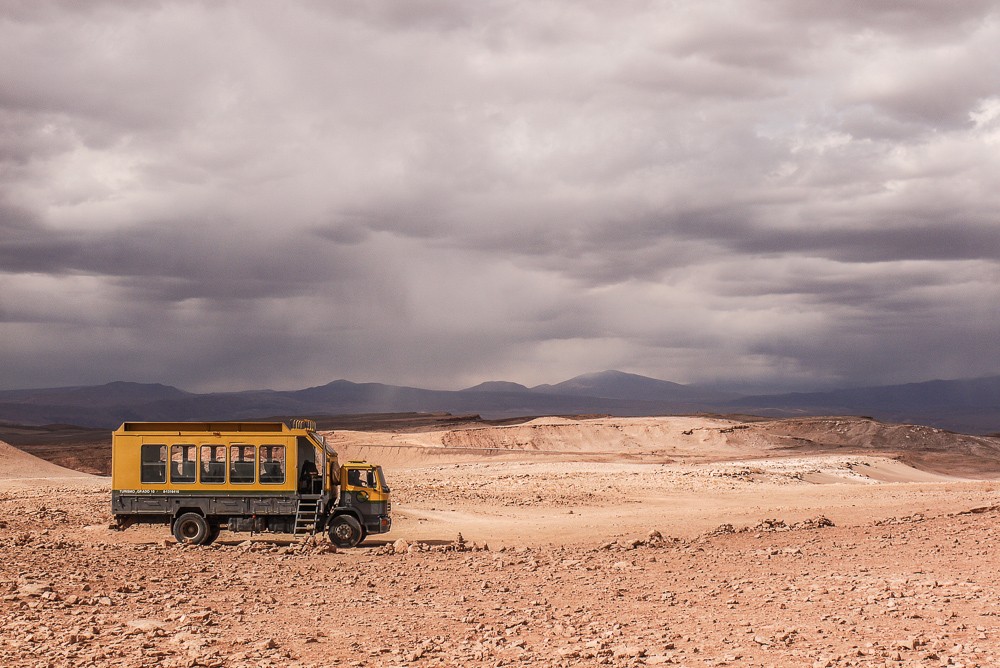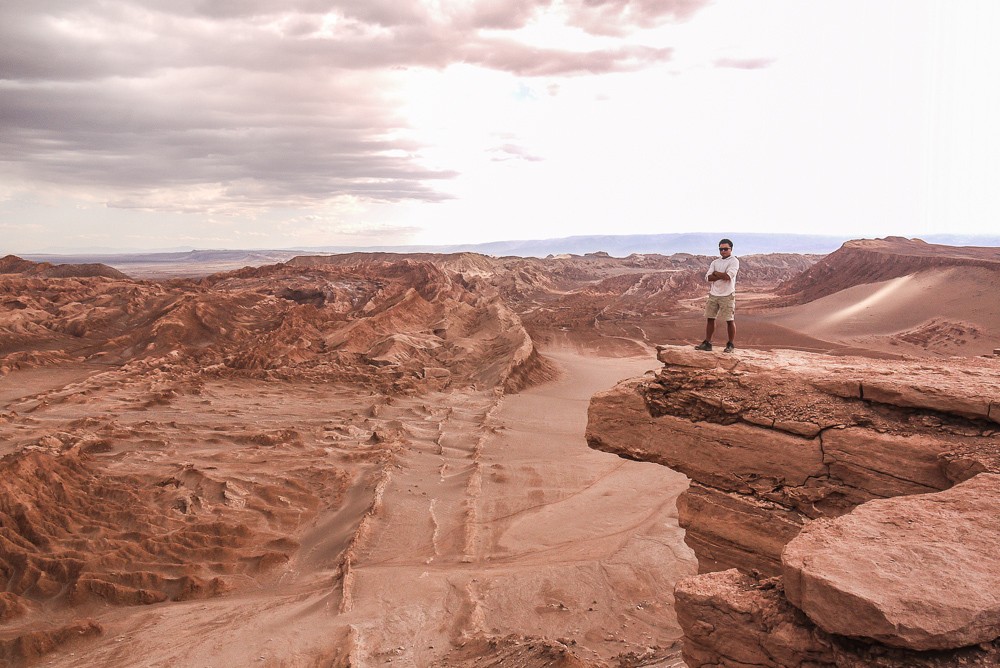Bucket List: 48 Hours In San Pedro De Atacama
Bucket List: 48 Hours In San Pedro De Atacama
The town of San Pedro de Atacama sits by the border of Argentina and Bolivia in Chile and is a popular gateway for those looking to see the Salar de Uyuni in Bolivia. What was originally a two day pit stop became one of the highlights of my trip in terms of awe and wonder. It would be the biggest understatement to say that the landscape here was extraordinary. It was so out of this world that I was more blown away than when I was staring at the the Mars-like terrain of Wadi Rum in Jordan.
What San Pedro De Atacama does really well is to coordinate the scheduling of their activities to allow short term visitors to easily pack in a full day of back to back activities. This is great because there isn’t much else to do in the actual town, which is dominated by restaurants, hotels and tour offices.
Sandboarding The Valley Of The Dead
You can’t really come here and skip out on the sandboarding without a pretty damn good excuse. Who wouldn’t want to strap their feet onto a plank of wood and speed down the sandy slopes of a place called the Valley of the Dead (“Valle De La Muerte”)? Sandboarding is just like snowboarding – if snowboarding involves falling and tumbling your way down a steep sandy slope with an all you can eat buffet of sand and then walking up the same steep slope to do it all over again.
After a bumpy ride out of town, I was surprisingly given an actual snowboard instead of the plank of woods with velcro straps I had seen a few others carrying. Waxed board in hand, my first run was an embarrassingly slow slide and drop routine down the slope. When I finally picked up a bit of speed and started to turn, the board would cut deep into the sand, and I’d find myself falling forward or onto my butt. After two or three of these trial “runs”, I eventually got the hang of it and kept the board straight for a bit of speed only to find out I now couldn’t slow down like in the snow. I paid another visit to the sand buffet. With the steep climb back up, a smart man would know when to quit. I didn’t and would still be finding sand in different places a few days later.


Exploring The Valle De La Luna
In the afternoon, I headed to the Valle De La Luna known for it’s lunar landscape. The Atacama is one of the driest place on earth. With very little rain, the rocky desert landscape is eerily silent and arid all year long. Those are the first two things you’ll notice when you take your first steps into the “Valley of the Moon”. The ‘I’m on another planet’ feeling is amplified if you find yourself traveling there on the all-terrain half truck half yellow school bus vehicle belonging to the Grado 10 company. I found myself in San Pedro de Atacama on a rare stretch of cloudy days in late February. On my travels, I had received some strong recommendations to see the Valle De La Luna if I happened to be passing through the Atacama Desert, but having already seen some of the most impressive deserts during my travels through Egypt, Morocco and Jordan, I just couldn’t imagine how another one could amaze me. I did say the same of Wadi Rum and on this day I would be stand corrected yet again. At 4 pm, I was standing on the outskirts of town, when a massive yellow hybrid truck pulls up and stops with the sound of hydraulic pumps releasing. The door swings open about 5 feet off the ground. Our guide jumps down with the soft landing of someone who has made an art form of exiting this behemoth of a vehicle. He pulls out a step ladder and invites all 25 of us aboard. The engine roars to life again and we head 8 km out of town towards the Valley of the Moon.


Passing sharp volcanic peaks and a distinctive rock formation known as the Amphitheater, a place we would be returning to at sunset, we ventured deeper into the la valle. Our first stop was the misinterpreted Valle De La Muerte (“Valley of the Dead”). The story goes that when an early French explorer came upon this place, he exclaimed that they were looking at the Valley of Mars for its rocky and red landscape. Unfortunately, with his horrible accent, it came out sounding more like the Spanish word for death, Muerte – something that the locals deemed just as fitting considering the unforgiving terrain. Standing high above the rim of the looking down in the center of the Great Crater, it is impossible not to associate the look and feel of it with that of the moon or Mars, even if only from pictures and videos. It’s so similar in composition that NASA uses it as a staging age for testing instruments and vehicles to be used in future Mars missions.





If we turned back at this point, I would have been satisfied just to have seen such an impressive and breathtaking sight. With the clouds floating across the sky and casting a moving shadow that slowly crept over the peaks and jagged outcroppings of the valley below, the place felt dead and alive at the same time. But there was still more to see. We headed to a natural pillar formation affectionally called the Tres Maris (“Three Marys”) for their resemblance to the three biblical women present at the crucifixion of Jesus and explored the narrow passageways and caves within the Cordillera de la Sal. These salt mountains were formed millions of years through rain and the harsh sun over the desert. Looking closely at the surface of the rocks, the calcium sulphate deposit look more like crusted salt.






An hour before sunset, we made our way to the Amphitheater that we had passed earlier on our way into the valley. The sun had already started to descend below the clouds painting the sand dunes with a broad stroke of orange. As we scrambled up the rocky ridge line to the top of the volcanic peak, the landscape came to life with colors. In the distance, the clouds darkened as though threatening to rain in a place that gets about 10 days of rain a year. Tones of yellow swirled with the blues and soft pink of the skies while the rocky terrain below glowed like hot ember. Looking up at the ridge, it resembled the back of a dinosaur so much so that I thought I was climbing up the spine of a thunder lizard turned to stone.



As the last light of day was eventually swallowed beneath the horizon, I stayed as long as I could to watch the day give way to dusk. It’s not everyday that you get to see the sun set on Mars.
The Plumes And Geysers Of El Tatio
The next morning, I woke at 3:30 am and slept through a bumpy 2 hour ride to El Tatio to see a bunch of geysers. It’s amazing what you’re willing to do when you’re traveling. At 4320 m (14173 ft), it is one of the highest set of geysers in the world. Despite the freezing weather, visitors brave the early morning cold to see the steams rise from the bubbling geysers at dawn. This other-worldly display is surprisingly worth the lost of sleep. Just before the the sun came up, we shuffle off the bus and waited for the light to appear. As hard as it was to wake up so early, seeing that first light break from the darkness never gets old and will always put a smile on my face, reminding me of all the possibilities that are yet to come. Maybe it was the high elevation, but I felt an even more euphoric high than usual. We had breakfast shortly after and hot coffee never tasted so good as when it was also used to bring back the feelings in your fingers.




The only downside to having the dramatic cloudscape over the Valle De La Luna the day before was that it meant the usually clear skies over the Atacama desert was now covered. This made me miss out some of the most spectacular stargazing in the world. Anything to give me an excuse to go back right?
Updated on May 28, 2024







